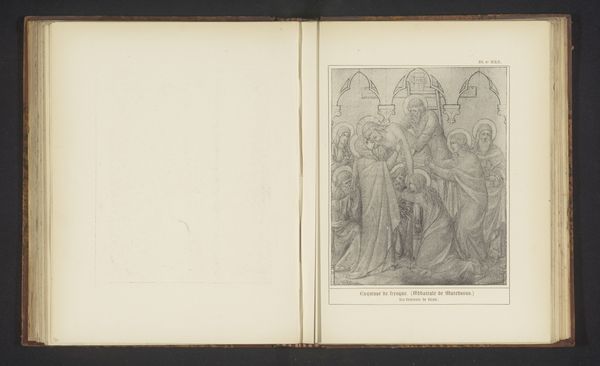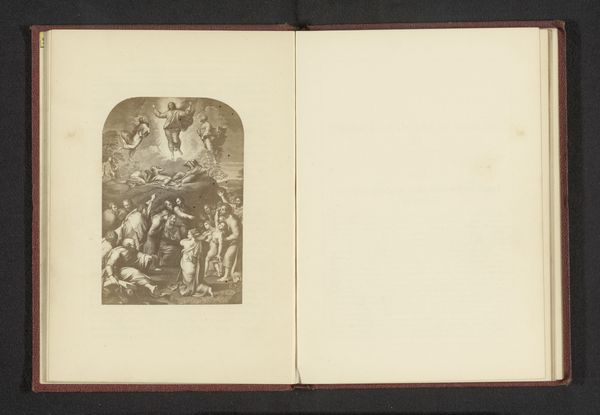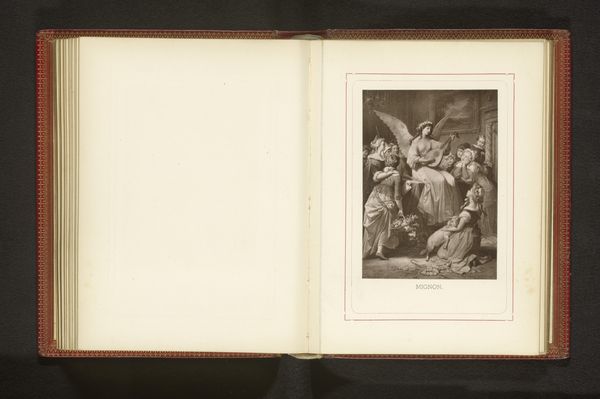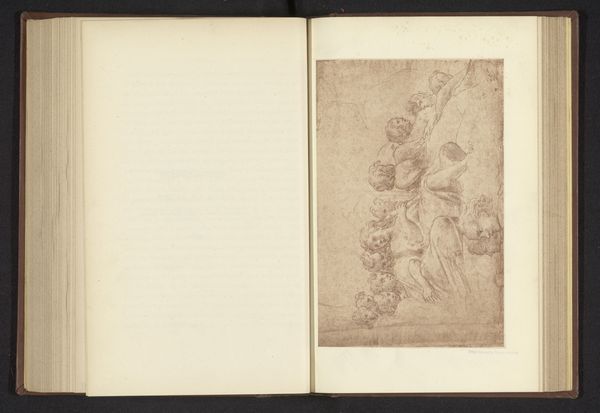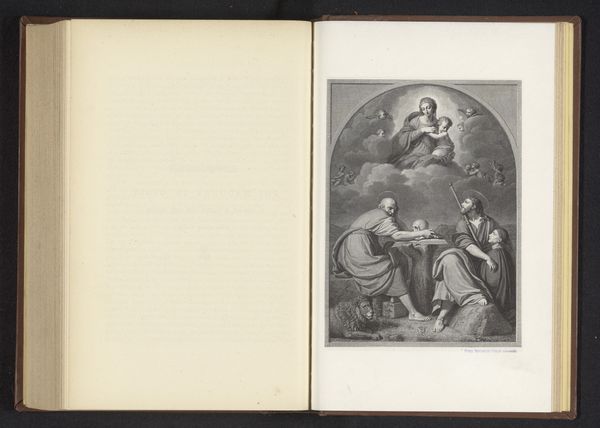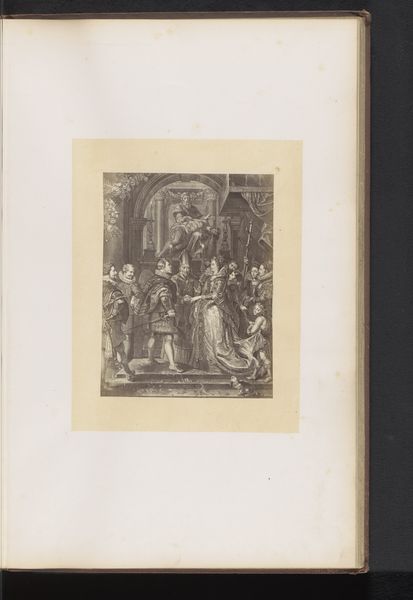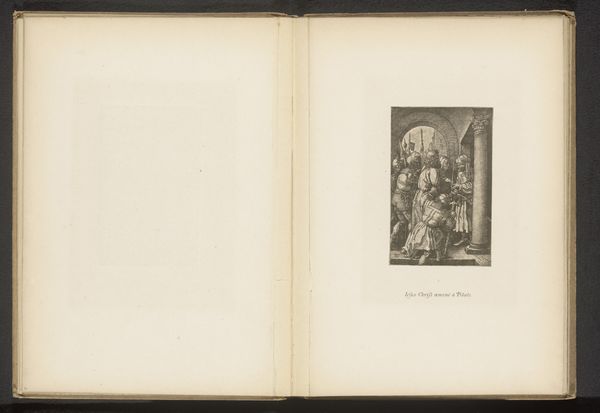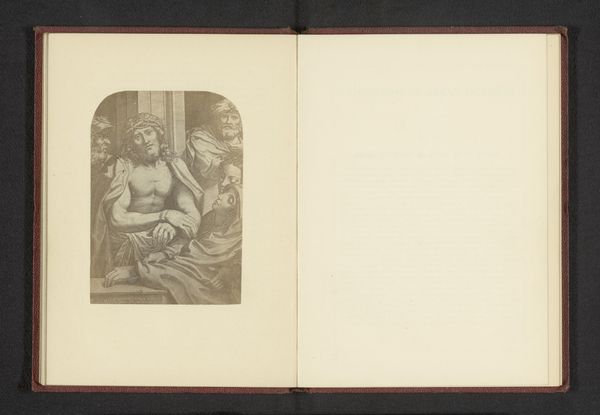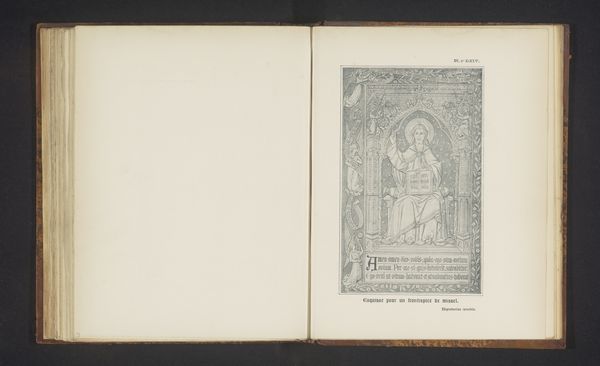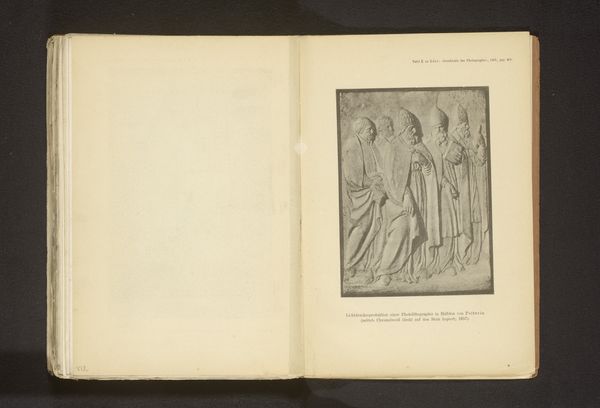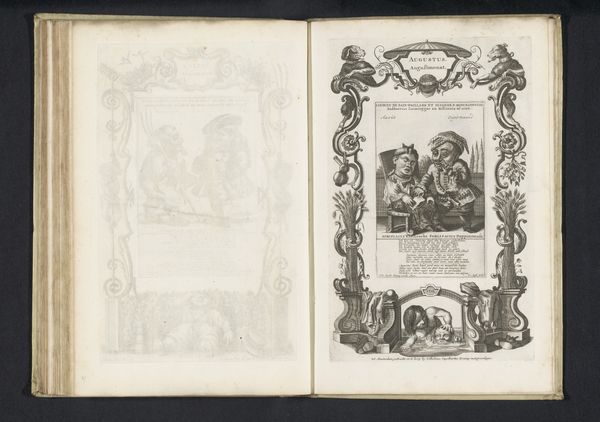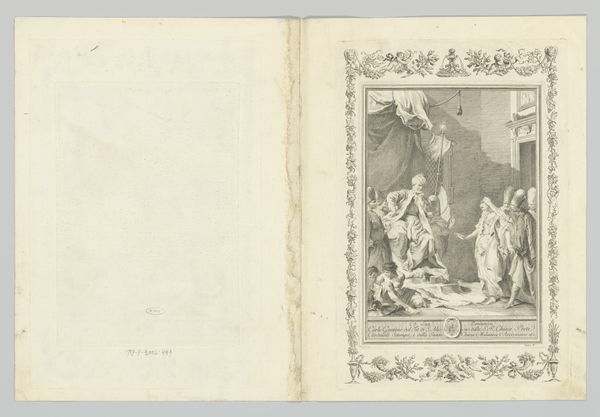
Reproductie van een schets voor een fresco in de Abdij van Maredsous, België, afgebeeld de graflegging van Christus before 1896
0:00
0:00
drawing, print, paper
#
drawing
#
medieval
#
narrative-art
# print
#
paper
Dimensions: height 185 mm, width 150 mm
Copyright: Rijks Museum: Open Domain
Curator: Here we have a reproduction of a sketch made before 1896 by Joseph Casier, showing a fresco design destined for the Abbey of Maredsous in Belgium. The subject matter is the entombment of Christ. It's rendered as a print, a drawing on paper. Editor: Wow, instantly, there's this almost overwhelming sense of somber quietude. It’s not just sad; it’s deeply respectful. Curator: Indeed. Casier situates this crucial religious scene within the artistic conventions he probably knew well – in this case, a narrative reminiscent of medieval depictions of grief, death, and mourning. Looking at the broader scope, medieval art provided didactic material for largely illiterate populations of its time. Editor: It makes me think about the weight of sorrow, not just emotional, but physical. You can almost feel the heft of Christ's body, how the figures strain to hold Him. I see a fragility, the fine lines and soft shading give it a kind of vulnerable feel. Curator: Notice how the composition frames Christ as a passive object? Considering theories about sacred male passivity in artistic depictions of religious scenes might let us analyze the ways sacrifice and redemption play out on Christ's body. He’s a figure of divine power, sure, but here, rendered utterly powerless and dependent on the women, figures often denied agency in this period. Editor: Yes! The women really draw the eye. They aren't just grieving, they are actively cradling, supporting, witnessing, and they do so with these delicate lines that evoke such intense feelings. Their gazes invite a shared grief. Curator: It brings to mind ongoing debates around how faith traditions have represented gender roles over time, and also questions who, within a spiritual community, is allowed to take on active roles in sacred rituals. Editor: You are right, the political reading of this piece is really striking! I’ll probably mull on this for a while. Curator: Agreed. Art acts as a touchstone for wrestling with the complexities and ambiguities in history and also allows conversations about society’s treatment of race, class, gender, and faith to continue, even across long stretches of time.
Comments
No comments
Be the first to comment and join the conversation on the ultimate creative platform.
